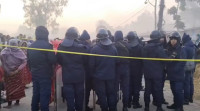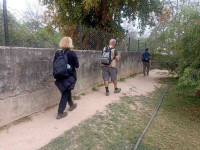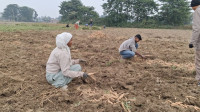National
Most women journalists face online violence: Study
Facebook Messenger is the most commonly used platform for online abuse, according to the report prepared by Media Advocacy Group.
Anup Ojha
An overwhelming majority of women journalists in Nepal have faced online violence, a new study shows.
The research conducted among 281 women journalists by the Media Advocacy Group (MAG) has revealed that 88.6 percent faced online violence in their lifetime. Of them, 53 percent faced violence by people from their own profession.
The findings were made public in the Capital on Wednesday in the presence of Baikuntha Aryal, secretary of the Ministry of Communication, Bipul Pokharel, president of Federation of Nepali Journalists (FNJ), and women rights activists and journalists. Senior journalists and co-researcher Babita Basnet presented the findings of the study. As representative cases, two women journalists shared their experience of online violence.
Speaking at the function, Secretary Aryal lauded the research saying it will be helpful in formulating necessary policies to address the problems. “At a time when government policies are being criticised for not being evidence-based, these findings will help us formulate better laws and policies on online violence,” said Aryal.
Other experts highlighted the findings and underscored the need for sensitivity in addressing the problem.
“This is very unfortunate and the findings also suggest it’s a time for self-reflection for journalists,” said Pokharel, president of the FNJ.
“Social transformation is possible through journalism, but it can only be achieved if media people can practise the profession in a free and fair manner. This research shows the necessity of behavioural change among journalists as over half the respondents said that they were victimised by their own colleagues,” said Pokharel.
The organisation made the report public as part of the ongoing 16-Day of Activism against Gender-Based Violence, an annual global campaign that kicked off on November 25. Group officials said they carried out the research for three months (from May 1 to August 31) with funding from Friedrich Ebert Stiftung Nepal.
According to Basnet, they reached out to 500 women journalists across the country for the study but only 281 responded to survey questions. The respondents worked in various print, broadcast and online media outlets in the country.
Researchers said they asked respondents to fill up the questionnaire and also conducted focus group discussions.
The respondents complained that the cyber bureau of the Nepal Police was reluctant to register their cases citing lack of clear and specific laws to address such online violence.
According to the Federation of Neplese Journalists (FNJ), of the total 13,077 journalists registered with it, only 2,408 are female.
The research revealed that Facebook Messenger is the most common platform for online violence: 62.3 percent respondents said they were abused through Messenger, while 15.3 percent faced such abuse on Twitter, 12.8 percent on Whatsapp, 11.7 percent on Viber, six percent on email and 4.6 percent on Instagram.
Of the 281 respondents who answered the multiple choice questions about the perpetrators of violence, 116 said it was their own colleagues and 89 said it was journalists from other organisations. Likewise, 89 respondents said strangers were involved, 63 said their news sources were involved, 56 said people affiliated with political parties, and 26 said they were subjected to online violence at the hands of government officials.
Online violence against women journalists is not limited to Nepal.
A global study of online violence against women journalists conducted by the International Center for Journalists with support of the UNESCO states that online violence against women journalists is one of the most serious contemporary threats to press freedom internationally.




 11.12°C Kathmandu
11.12°C Kathmandu.jpg)













%20(1).jpg&w=300&height=200)

